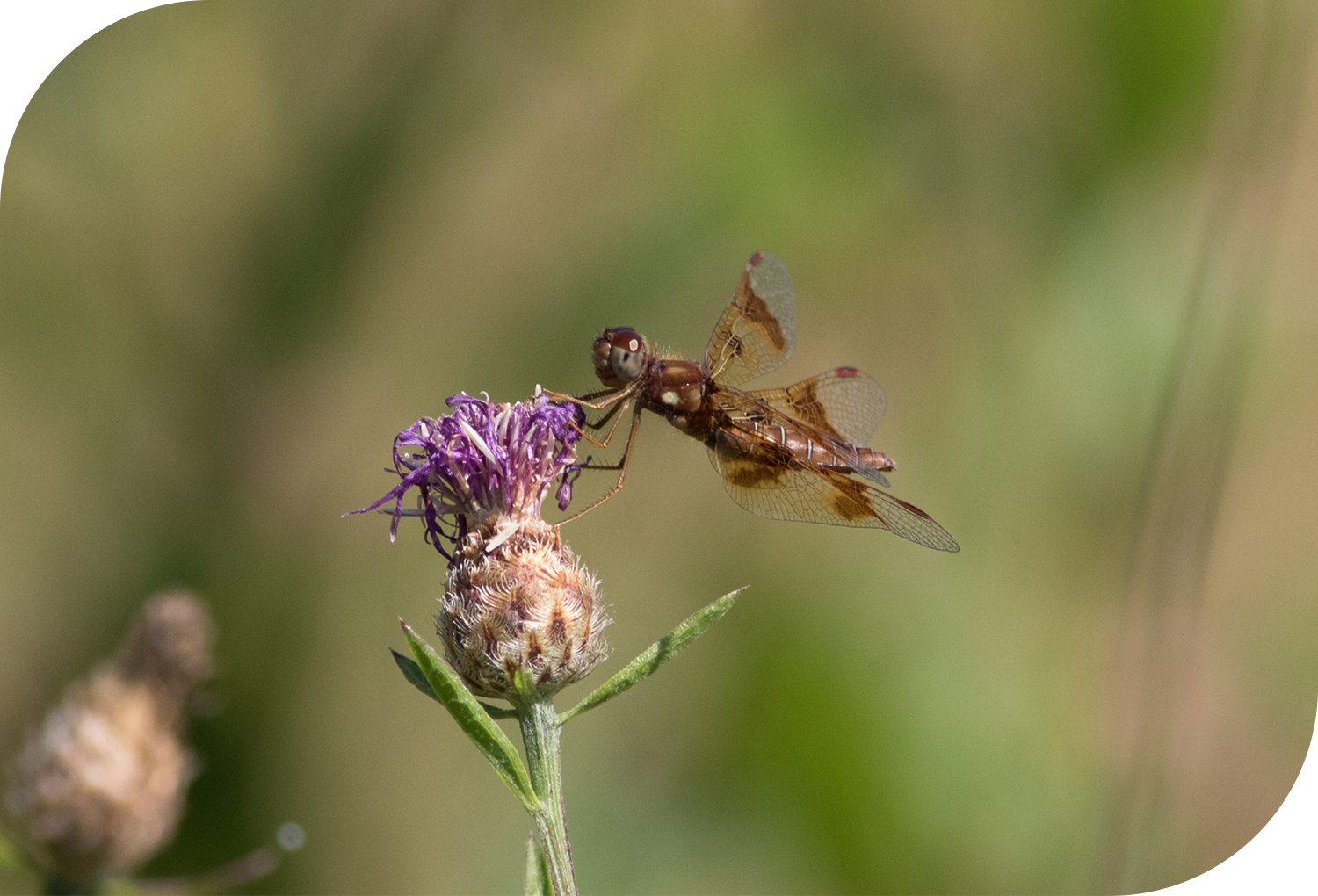It’s late July, and the sun beats down. Birds and mammals retreat into the shade, waiting for the soothing cool of the evening. Meanwhile, an order of carnivorous aerialists peaks in abundance.
As is the case every summer, a multitude of dragonflies and damselflies (members of the order Odonata) have emerged from their aquatic lairs to fill every corner of Manomet’s property. Ranging from high-fliers that patrol the skies to ambush predators that lie in wait in the undergrowth… they are everywhere.

Odonate larvae (nymphs) live in the water, a life stage that can last several years. During this period, the nymphs pull water through their gills to capture oxygen, and their “exhale” helps propel them through the water. The presence of nymphs in a water body is a great indicator of high water quality, as many species are sensitive to pollution. Nymphs target a variety of items for prey, ranging from mosquito larvae to small fish to other nymphs.

Just like in their aquatic larval stage, Odonates are highly efficient predators as adults. Once they take to the sky, their skills are truly impressive. They can hover, dive, fly backward and upside down, and can even reach speeds of 30 miles per hour; not to mention that they can consume their prey while flying. And Odonates have stood the test of time – their ancestors date back to 325 million years ago when the largest individuals had wingspans of up to 30 inches.
What Odonates do we have here at Manomet? Around 20 species of dragonflies and damselflies have been identified to this point, though there are likely many more to be discovered. Manomet’s property provides the perfect habitat for a variety of species; high-quality freshwater wetlands where the nymphs can feed and grow, shaded forest and open fields to hunt as adults, and the absence of pesticides and herbicides.
Here are some photos of various Odonate species we have photographed on the property. The main difference between a damselfly and a dragonfly is that damselflies have smaller eyes and very thin, twig-like bodies. And, when resting, damselflies’ wings are often held together, unlike dragonflies.





 Back to all
Back to all
